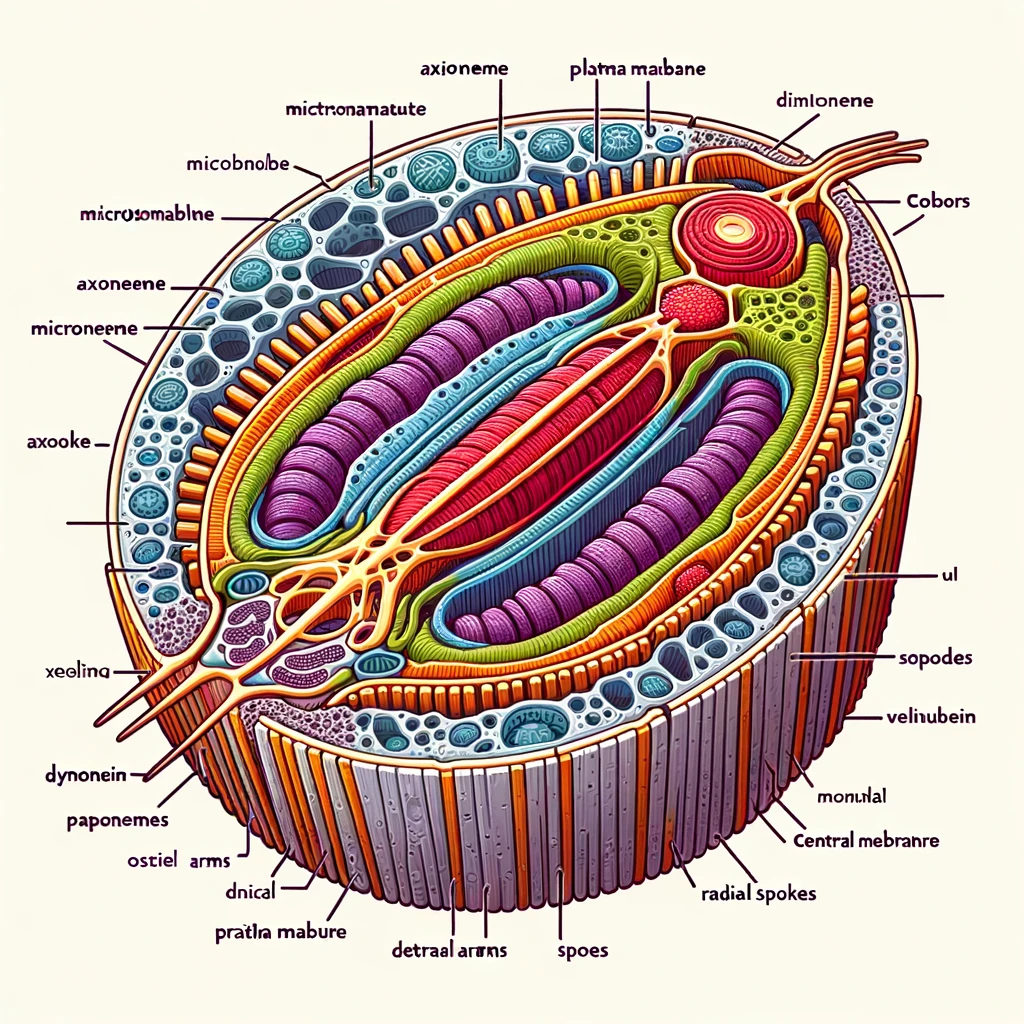Locomotion and Reproduction (VSAQs)
Zoology-1 | 5. Locomotion And Reproduction – VSAQs:
Welcome to VSAQs in Chapter 5: Locomotion And Reproduction. This page includes the most important FAQs from previous exams. Each answer is provided in simple English and presented in the exam format. Use these answers to boost your understanding and aim for top marks in your final exams.
VSAQ-1 : Draw a labelled diagram of T.S of flagellum.

VSAQ-2: Differences Between Flagellum and Cilium
Think of a flagellum as a long, whip-like tail that helps a cell move. It’s like the propeller of a boat, pushing the cell forward. You can find flagella on cells like sperm, where they help the cell swim.
On the other hand, a cilium is more like a tiny hair on the cell’s surface. Instead of moving in a wave, cilia beat back and forth, like oars on a boat. They not only help the cell move but also have other jobs, like sweeping away dust from your lungs or helping single-celled organisms capture food.
VSAQ-3: What is a Kinety?
A kinety is a special row of tiny structures found in certain single-celled organisms, like ciliates. These structures help the ciliate move. Imagine the ciliate as a tiny swimmer with rows of tiny oars (cilia) that help it glide through the water. The kinety is like the organized line of these oars, allowing the ciliate to move smoothly.
VSAQ-4: Synchronous vs. Metachronous Movements
In synchronous movements, cilia all beat together in the same direction at the same time. It’s like a group of dancers moving in perfect sync, which helps the cell move straight and fast.
In metachronous movements, the cilia beat one after the other in a wave-like pattern. Imagine watching a crowd at a stadium doing the wave – that’s how the cilia move, creating a smooth, flowing motion that helps the cell move in a more coordinated way.
VSAQ-5: Proter and Opisthe in Ciliate Conjugation
When two ciliates come together to exchange genetic material, they create two new individuals called the proter and the opisthe.
The proter is the front part of the new pair. It keeps important parts from the original ciliate, like the structures that help with feeding and water balance.
The opisthe is the back part. It gets different parts from the original ciliate and grows the rest on its own. Both the proter and opisthe are essential for the ciliates to continue surviving and reproducing.
VSAQ-6: Differences Between Lobopodium and Filopodium
A lobopodium is like a thick, blunt finger sticking out of a cell. Cells like Amoeba use lobopodia to move around and catch food.
A filopodium is different. It’s thin and pointy, like a little thread sticking out from the cell. Some cells use filopodia to sense their environment or grab onto tiny particles. Both of these structures help the cell interact with its surroundings.
VSAQ-7: Conjugation in Ciliates
Conjugation is a process where two ciliates come together and exchange genetic material. It’s like two friends swapping ideas to become smarter and stronger. When they exchange this material, they create new combinations that help them adapt and survive better. Examples of ciliates that do this are Paramecium caudatum and Tetrahymena thermophila.
This exchange not only helps them reproduce but also gives them a better chance of thriving in different environments.
